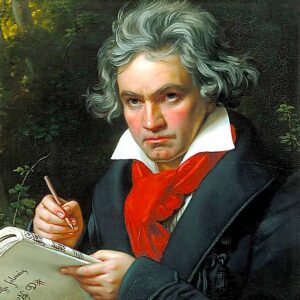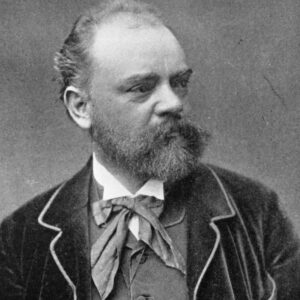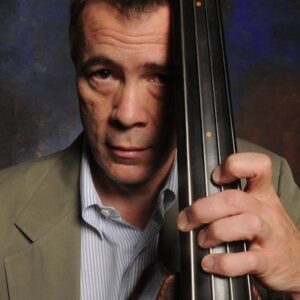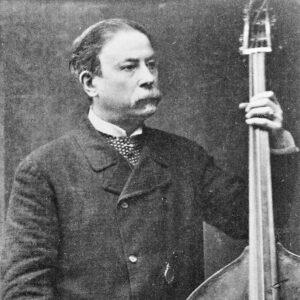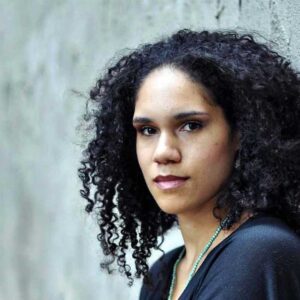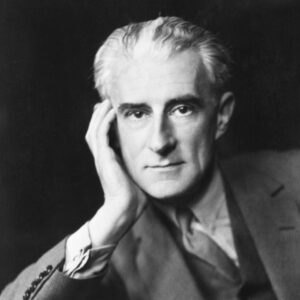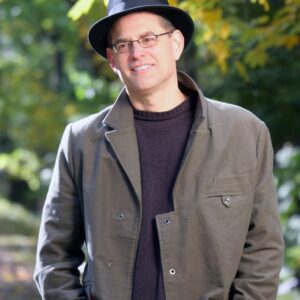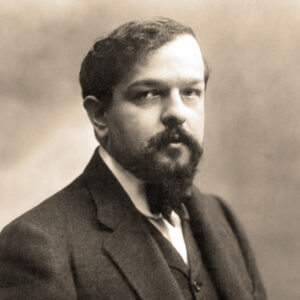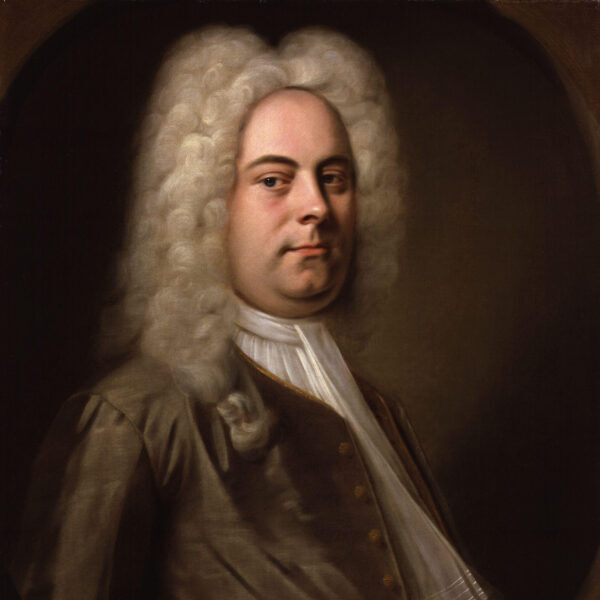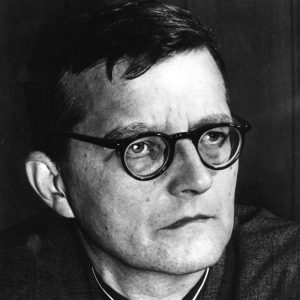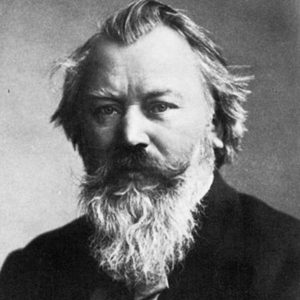Johannes Brahms
Variations on a Theme by Haydn, Op. 56a
Johannes Brahms was born on May 7, 1833 in Hamburg and died in Vienna on April 3, 1897. He is unquestionably one of the greatest composers of the late nineteenth century, whose music greatly enriched the repertory for piano, organ, chamber music, chorus, and orchestra. Composed in 1873, the Variations on a Theme by Haydn exists in two versions―for two pianos, and for orchestra. The first performance of the orchestral version occurred in Vienna on November 2, 1873 to immediate critical and popular acclaim.
Conventional musicological wisdom categorizes Brahms as a conservative “Classical” Romanticist, as opposed to the more radical Wagner and Liszt. More recent scholarship has called this oversimplification into question, recognizing, as did Arnold Schoenberg, just how “modern” Brahms was. One particular work for orchestra ought to be recognized as a singular, original, and innovative step forward in that repertory—a set of variations that stands alone without belonging to a larger multi-movement composition. That piece is the Variations on a Theme by Haydn, composed in 1873. Brahms’s original concept of the Haydn Variations was to create a piece for two pianos. When he published the work, however, he did so in two co-equal companion versions—a clear signal that the two-piano version (op. 56b) was not merely a reduction of the orchestral piece. Donald McCorkle points out in the notes to his fine edition of the Haydn Variations in the Norton Critical Score series, that the work represents a transition point in Brahms’s career. This observation holds true on many levels of interpretation, but perhaps the most significant of these is the fact that the Haydn Variations was Brahms’slast orchestral work to appear before the First Symphony (1876). His prior efforts to compose for orchestra included two Serenades for small orchestra (opp. 11 and 16), his Piano Concerto no. 1 in D Minor, op. 15, and the choral masterpiece, A German Requiem. Many of the challenges Brahms faced in mastering the art of orchestration in these earlier works are not apparent in the Haydn Variations. He had at last found his voice as a symphonic composer.
The theme that Brahms chose for his Variations was from the second movement of a divertimento for woodwinds by Franz Joseph Haydn (1732-1809) entitled Chorale St. Antoni. More recent scholarship has cast some doubt on Haydn’s authorship of the Chorale St. Antoni, but this question arose only long after Brahms’s death.
The theme is an especially appealing one with a tuneful melody and clear (if irregular!) phrase structure. Throughout the piece, Brahms maintains respect for thetheme’s inherent charm, without ever gilding it with meaningless ornamental decorations. Each of the eight variations and the coda (marked Finale) explores a different side of the theme’s potentiality—nobility, playfulness, introspection, and dance–like qualities. Brahms’s masterpiece paved the way for other fine sets of independent variations for orchestra, including Elgar’s Enigma Variations and Kodaly’s Peacock Variations.
Program Notes by David B. Levy, © 1995/2006/2017
Ernest Chausson
Poème, op. 25
French composer Ernest Chausson was born in Paris on January 20, 1855and died in Limay, near Mantes, Yvelines on June 10, 1899 as a result of a bicycle accident. Trained to be a lawyer, he chose instead to devote himself to music. His principal mentors were Jules Massenet and César Franck, although he was also attracted to the music of Wagner. He composed in a wide variety of genres, both vocal and instrumental, but is perhaps best known for his Poème for Violin and Orchestra.
Chausson, a composer of independent means, was born a full generation later than Saint-Saëns, and while his music breathes a spirit of lyrical romanticism, its harmony is infused with a more forward-looking technique and vocabulary than that of his elder compatriot. Unlike Saint-Saëns, Chausson was a late bloomer, not starting his conservatory studies with Jules Massenet and César Franck until 1880 at the age of 25. Had his life not been tragically cut short as the result of a bicycle accident, it is impossible to predict how far his considerable talent and craft might have taken him.
The beautiful Poème was composed and dedicated in 1896 to the famous Belgian violinist, Eugène Ysaÿe, who gave it its first performance. Allegedly inspired by a short story by the Russian Turgenev, Chausson’s Poème has no discernible program. An interesting feature of the history of this work is the evolution of its title. At first Chausson called it Le chant de l’amour triomphant: poème symphonique pour violon et orchestre. This became shortened to Poème pour violon et orchestre, before the composer simply called it Poème. This move away from complexity and interpretive specificity toward simplicity is a hallmark of the composer’s aesthetic.Thus this piece takes its rightful place in the repertory of Romanticism where emotional expression goes beyond the capacity of words or descriptive visual images.What remains is a soulful showpiece for the violin, colored by hints of antique modes and strange juxtapositions of major and minor modality. Its most haunting moment comes near the end of the piece, as the soloist’s trills ascend to the highest range of the instrument.
Program Note by David B. Levy, © 2001/2017
Mason Bates
Alternative Energy
American composer Mason Bates was born on January 23, 1977 and was raised in Richmond, VA. After his initial studies in Richmond, he continued his studies in composition and in English literature in the Columbia-Juilliard Program in New York. His primary composition teacher there was John Corigliano, but he studied also with Samuel Adler and David Del Tredici. His music fuses innovative orchestral writing, imaginative narrative forms, and the harmonies of jazz and the rhythms of techno. He often performs in clubs as well as in symphonic venues on the electronica, which he describes as “a catch-all term for the various subgenres of techno music.” Frequently performed by orchestras large and small, his symphonic music has been the first to receive widespread acceptance for its expanded palette of electronic sounds, and it is championed by leading conductors such as Riccardo Muti, Michael Tilson Thomas, and Leonard Slatkin. We may count our own Robert Moody among them. He has become a visible advocate for bringing new music to new spaces, whether through institutional partnerships such as his residency with the Chicago Symphony, or through his classical/DJ project Mercury Soul. Carnegie Hall’s 2012-13 season opened with Riccardo Muti leading the Chicago Symphony in Alternative Energy, an ‘energy symphony’ that spans four movements and hundreds of years.The Santa Fe Opera Company performed the world premiere of Bates’ opera, The (R)evolution of Steve Jobs in the summer of 2017. The Winston-Salem Symphony performed Bates’ Rusty Air in Carolina, composed for Robert Moody upon his appointment as Music Director of the Winston-Salem Symphony and receiving its world premiere here on May 20, 2006. Maestro Robert Moody also led a performance of the composer’s Liquid Interface (2007) in May 2013.Alternative Energy is scored for electronica and orchestra, comprising 3 flutes (2nd doubling alto flute, all doubling piccolo), 3 oboes (3rd doubling English horn), 3 clarinets (2nd doubling E-flat clarinet), 3 bassoons (3rd doubling contrabassoon), 4 French horns, 3 trumpets, 2 trombones, bass trombone, tuba, 3 percussionists, harp, piano, and strings.
The close friendship between composer Mason Bates and Maestro Robert Moody has been a fruitful one, bringing the music of this acclaimed young composer to Winston-Salem Symphony audiences. Mason Bates’ notes for Alternative Energy follows:
Alternative Energy is an ‘energy symphony’ spanning four movements and hundreds of years. Beginning in a rustic Midwestern junkyard in the late 19th Century, the piece travels through ever greater and more powerful forces of energy — a present-day particle collider, a futuristic Chinese nuclear plant — until it reaches a future Icelandic rainforest, where humanity’s last inhabitants seek a return to a simpler way of life.
The idée fixe that links these disparate worlds appears early in “Ford’s Farm, 1896.” This melody is heard on the fiddle — conjuring a figure like Henry Ford — and is accompanied by junkyard percussion and a ‘phantom orchestra’ that trails the fiddler like ghosts. The accelerando cranking of a car motor becomes a special motif in the piece, a kind of rhythmic embodiment of ever-more-powerful energy. Indeed, this crank motif explodes in the electronics in the second movement’s present-day Chicago, where we encounter actual recordings from the FermiLab particle collider. Hip-hop beats, jazzy brass interjections, and joyous voltage surges bring the movement to a clangorous finish.
Zoom a hundred years into the dark future of the “Xinjiang Province, 2112” where a great deal of the Chinese energy industry is based. On an eerie wasteland, a lone flute sings a tragically distorted version of the fiddle tune, dreaming of a forgotten natural world. But a powerful industrial energy simmers to the surface, and over the ensuing hardcore techno, wild orchestral splashes drive us to a catastrophic meltdown. As the smoke clears, we find ourselves even further into the future: an Icelandic rainforest on a hotter planet. Gentle, out-of-tune pizzicato accompany our fiddler, who returns over a woody percussion ensemble to make a quiet plea for simpler times. The occasional song of future birds whip around us, a naturalistic version of the crank motif. Distant tribal voices call for the building of a fire — our first energy source.
Interesting details concerning the performance of the work also may be found on Bates’ official website (www.masonbates.com):
The piece requires a laptop, 6 speakers placed around the orchestra, and a few onstage monitors. Included with the rental of the materials is a download link for a simple software sampler that triggers the sounds from the laptop (an additional percussionist or an assistant conductor simply hits laptop keys at rehearsal numbers). The electronic component is simple and workable within a compressed orchestral rehearsal period, and a live version of the electronic part can be realized when the composer is present.
Program Notes by David B. Levy/Mason Bates, © 2017/2011
Maurice Ravel
Boléro
Maurice Ravel was born March 7, 1875 of parents of Swiss and Basque descent in Ciboure, Basses-Pyrénées. He died December 28, 1937 in Paris. Boléro, his most popular composition, was first performed on November 22, 1928 at the Paris Opera. It is scored for piccolo, 2 flutes, 2 oboes (2nd doubles on oboe d’amore), English horn, E-flat clarinet, 2 B-flat clarinets, bass clarinet, 2 bassoons, contrabassoon, 4 horns, trumpet in D, 3 trumpets in C, 3 trombones, tuba, 3 saxophones (sopranino, soprano, tenor), timpani, percussion, celesta, harp, and strings.
The commission for Boléro came from the dancer, Ida Rubinstein, who wanted a piece on a Spanish scenario to be danced by herself and her company. Ravel at first planned to respond by orchestrating parts of Albéniz’s Iberia, but learned that someone had already been promised the opportunity to do so.
According to Bronislava Nijinska’s choreography for Boléro, a woman in a tavern dances alone on a tabletop, surrounded by lust-filled ogling men. As the dance gains in intensity, the men become more animated, until the scene finally erupts in violence. Ravel directed Boléro as a concert piece in 1930. Arturo Toscanini, however, beat him to the punch. The Italian conductor’s performance in 1929 with the New York Philharmonic established the work’s true reputation.
Interestingly, when Ravel heard Toscanini conduct the work in Paris, he chastised the maestro for taking the tempo much too quickly. Toscanini, who did not care forcriticism from any quarter, replied with smug contempt that the bolero is a dance that should not sound like a funeral dirge. Whatever the case may be, the published metronome marking of quarter note=72 and verbal instruction, Tempo di Bolero, moderato assai, certainly point any performer toward a seductive enough speed! Little would Ravel, Rubinstein, or Toscanini would have suspected the purpose to which director Blake Edwards had actress Bo Derek put the work in his 1979 romantic comedy, 10!
Ravel, with no small sense or irony, called Boléro “a masterpiece…without any music in it.” By the year 1931, the work had become heaped with both praise and scorn from critics, spurring Ravel to reply via a letter published in London stating his limited goals in composing it and its experimental nature.
Boléro opens with the snare drum tapping out the dance’s characteristic rhythmic pattern, punctuated by plucked violas and cellos. Two Spanish-Moorish melodic ideas in the solo flute take the foreground while the unrelenting drum continues its hypnotic journey. Repetitions of one or both melodic ideas are taken up in turn by the clarinet, bassoon, soprano clarinet, oboe d’amore (an instrument from the Baroque era similar in range to an English horn). These are followed by solos for (muted) trumpet, tenor saxophone, sopranino and soprano saxophones, two piccolos, celesta, full winds, andtrombone. Eventually the tunes are passed along to the full string section.
As the ear becomes ever more hypnotized by the seductive modal tunes, the effect of the additive instrumentation results in a gradual and inexorable intensification of tone color, harmony, and volume. Toward the very end, the tonal context of C Major (and its modal variants) is pushed—with sudden and shocking effect—to a new key, E Major, before collapsing back to its original tonality of C and reaching its violent conclusion.
Notes by David B. Levy © 2008/2017



